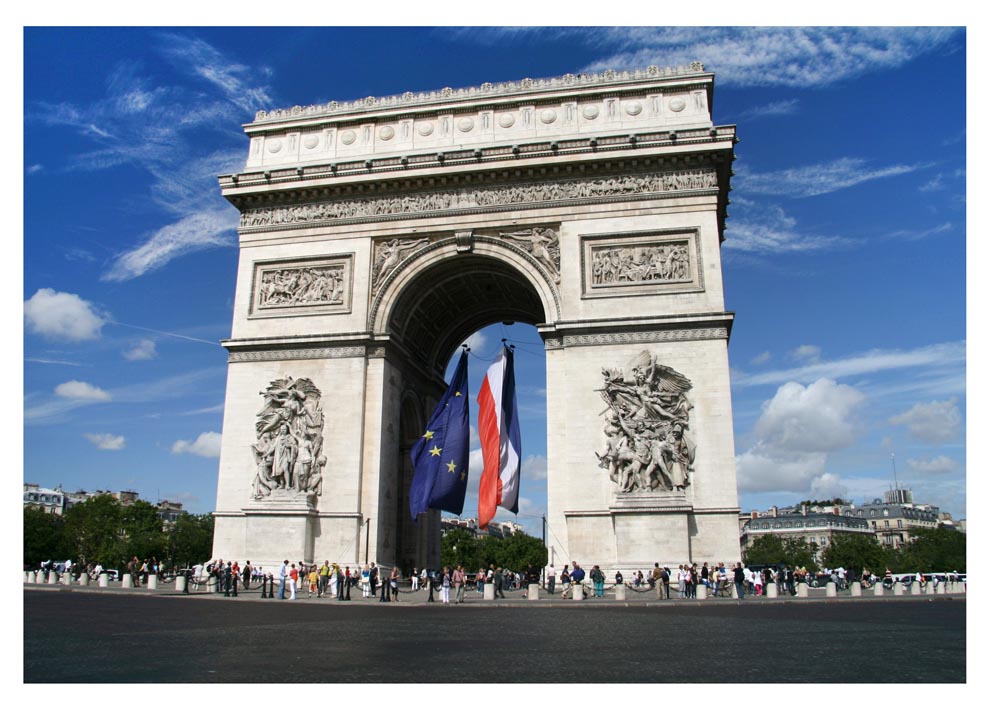
Napoleon III became Emperor in 1852 when the city of Paris was heavily polluted. Parisians were emptying sewage and waste into the streets and into the Seine River. There were no sewers. In 1832 there had been a massive cholera epidemic in which 20,000 residents died.
A new city emerged with long avenues and wide boulevards. Paris would become a beautiful and elegant capital. Public transportation became convenient. Opera houses, theaters, parks and gardens would transform this Paris of Napoleon III.

The story of Paris is one of more than 2,000 years. Its origins can be traced from prehistoric times to the present. Ruins of both Roman arenas and baths can still be seen. Many fragments of Paris the medieval city survive.
It is to Paris that Gabrielle walked down the Champs Elysees on a bucolic June morning in 1987. The Arc de Triomphe was built for Napoleon Bonaparte. And like the triumphal arches of the ancient Roman Empire, it was a symbol of his capture of the capital. Although embellished with sculptures and inscriptions to glorify the empire and the emperor, it was never completed during his lifetime.
Gabrielle knew the history of her city and enjoyed its prestige and glamour. The Champs Elysees Avenue is one of the most glamorous shopping area in Europe. She wanted to find a new Summer scarf this day, as well as some pearl buttons and some fine silk material. Gabrielle loved to sew and she planned to make a new dress for a wedding in July. Her cousin, Marc, was to be married at the Notre Dame Cathedral to his betrothed Suzanne.
She found the articles she was shopping for and decided to have tea at the Ritz Hotel by the Place Vendome. She passed the Van Cleef & Arpels store and world-famous banks amid the Saturday crush of residents and visitors alike.
The Ritz afternoon tea was held in a beautiful room with tall windows streaming sun. Gabrielle ordered her tea and soon had the epergne filled with tea finger sandwiches, various sweets, scones, clotted jam, and lemon curd on the table. There were small asparagus tarts and chocolate bonbons. For over an hour, she lingered savoring the beautiful piano music and the delicious finger foods. What a perfect day it had been.
Outside, she again walked past the Paris Opera House and the sugar crepe sellers on to the boulevard des Capucines named after the Franciscan nuns of the Convent of Capucines that was here until the Revolution. Jacques Offenbach, the father of the cancan, lived and died in a house there.
Still enjoying the light breeze and the sunshine, Gabrielle turned onto the rue du Faubourg St. Denis. The horse-drawn wagons have been replaced by vans and cars, but the area is still a lively market square. She stopped at the Chez Francis to buy some cheeses and fruits. She looked at the Theatre du Chatelet and recalled that she and Peter had concert ticket for the fortnight. They were celebrating their first anniversary as a couple.
Chefs from all around the world come to Paris to buy cooking equipment from stores such as Dehillerin and Simon. They taste the traditional onion soup served at this les Halles market. Maybe she would suggest that she and Peter stop here prior to their concert. She wanted to purchase some small tart dishes. Raspberries were in season and she would make raspberry tarts for their dessert after the concert.
Ah, to be young, to be in love, to live in this city of Paris was all too grand. Gabrielle smiled.
Picturesque Paris, the stuff dreams are made of.
Patchwork Paris, a boulevard of booksellers and ancient antiquities.

